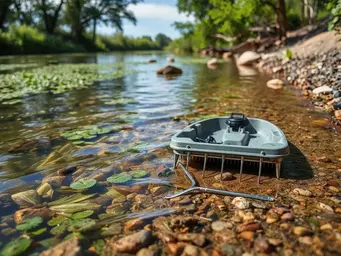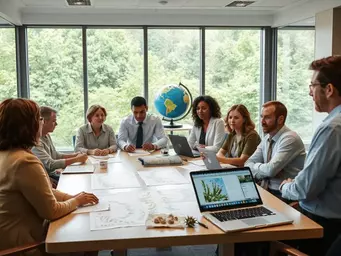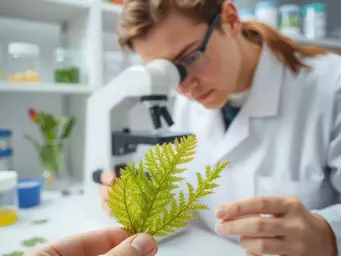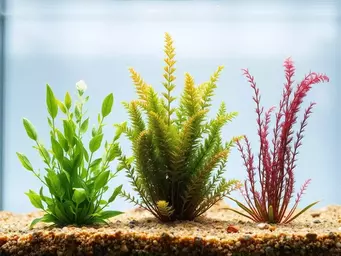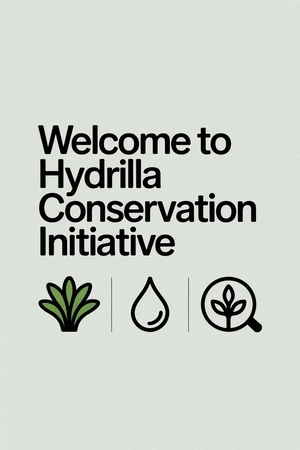In the realm of environmental conservation, knowledge is power. Understanding the complexities of aquatic invasives like hydrilla can help protect our precious ecosystems. Here’s what you’ll learn about managing this invasive species and the tools available to aid in these efforts.
What You Will Learn
- Hydrilla verticillata is an invasive aquatic plant that can significantly disrupt local ecosystems by outcompeting native species.
- Accurate identification of hydrilla is vital for effective management and prevention of its spread to other bodies of water.
- Digital tools and mobile applications enhance the ability to monitor hydrilla and educate communities about its impacts.
- Engaging local communities is key to successful invasive species management, fostering a culture of stewardship and awareness.
Hydrilla's Impact: A Visual Summary
This visual highlights the key threats posed by the invasive hydrilla plant, its rapid spread, and the critical role of accurate identification in ecosystem management.
Hydrilla: An Invasive Aquatic Plant
Native to Africa & Asia, introduced to the US in the 1960s.
Key Characteristics & Threats
- ● Rapid growth rate (doubles biomass in weeks)
- ● Displaces native species (reduced biodiversity)
- ● Decreases water oxygen levels (impacts aquatic life)
- ● Reduces recreational opportunities (boating, swimming)
Importance of Accurate Identification
- ● Prevents further spread
- ● Enables effective treatment strategies
- ● Empowers community education & stewardship
- ● Facilitates timely interventions
Digital Tools: Reshaping Hydrilla Management
Mobile apps & advanced tech enhance identification, monitoring, and community engagement.
Understanding Hydrilla and the Need for Identification Tools
In the world of aquatic conservation, understanding hydrilla verticillata is crucial. This invasive plant species, often mistaken for harmless aquatic vegetation, can wreak havoc on local ecosystems. With its rapid growth and ability to outcompete native plants, hydrilla poses a significant threat to biodiversity, water quality, and recreational activities. Have you ever seen a dense blanket of green covering a waterway? That’s hydrilla, and it’s time we take a closer look!
As someone deeply committed to environmental education through the Hydrilla Conservation Initiative, I recognize the importance of identifying this invasive species. Knowing what hydrilla looks like and understanding its characteristics can empower us to intervene effectively. Effective management starts with accurate identification, and that's where technology comes into play. For more insights on monitoring invasive aquatic plant infestations, you can refer to valuable resources like the University of Florida's IFAS Extension blog.

What is Hydrilla verticillata and Why is it Considered Invasive?
Hydrilla verticillata, commonly known as hydrilla, is a submerged aquatic plant native to Africa and Asia. Its ability to thrive in a variety of water conditions has allowed it to spread across the United States since its introduction in the 1960s. What makes hydrilla particularly concerning is its rapid growth rate, often doubling in biomass within just a few weeks. This swift proliferation can lead to serious ecological disruptions.
- Displaces Native Species: Hydrilla outcompetes native aquatic plants for sunlight and nutrients, leading to reduced biodiversity.
- Impacts Water Quality: Dense mats of hydrilla can decrease oxygen levels in the water, affecting fish and other aquatic life.
- Reduces Recreational Opportunities: Boating and swimming can become difficult in areas overrun with hydrilla.
Understanding these impacts is essential for anyone involved in ecosystem management. By identifying hydrilla early, we can implement management strategies before it takes over local waterways.
The Importance of Accurate Hydrilla Identification in Ecosystem Management
Accurate identification of hydrilla is not just beneficial; it is absolutely vital for effective ecosystem management. As environmental professionals, we need to be equipped with the right tools and knowledge to recognize the differences between hydrilla and similar native species. This precision in identification can lead to informed decision-making and timely interventions. Comprehensive guidelines, such as those found in the Invasive Aquatic Plant Surveillance Best Practices handbook, highlight the importance of thorough surveillance methods.
- Prevention of Further Spread: Early detection can significantly slow down the spread of hydrilla to other bodies of water.
- Effective Treatment Strategies: Knowing exactly what you're dealing with allows for the selection of appropriate management techniques.
- Community Education: Sharing identification skills with local communities fosters a culture of stewardship and awareness.
In my experience, empowering community members with identification tools enhances the overall effectiveness of hydrilla management efforts. Together, we can work towards restoring our precious ecosystems!
Pro Tip
When identifying hydrilla, consider utilizing mobile apps designed for plant identification. These tools often include features like real-time feedback and community support, allowing you to quickly confirm your findings and report any hydrilla sightings. This proactive approach not only enhances your personal knowledge but also contributes to broader conservation efforts!
Frequently Asked Questions About Hydrilla Management
What is Hydrilla verticillata?
Hydrilla verticillata is an invasive aquatic plant native to Africa and Asia, introduced to the US in the 1960s. It's known for its rapid growth rate and ability to outcompete native aquatic species.
Why is accurate identification of hydrilla important?
Accurate identification is crucial for effective ecosystem management because it helps prevent further spread, enables the selection of appropriate treatment strategies, and empowers community education and stewardship.
How do digital tools help in hydrilla management?
Digital tools and mobile applications enhance the ability to monitor hydrilla by providing features like real-time data analysis, enhanced user interfaces, integration with environmental datasets, and collaboration tools for citizen science, thereby streamlining identification and management efforts.
What are the main impacts of hydrilla on ecosystems?
Hydrilla displaces native species, reduces biodiversity, decreases water oxygen levels affecting aquatic life, and can hinder recreational activities like boating and swimming due to dense mats.
How can communities get involved in managing invasive species like hydrilla?
Communities can get involved by joining local conservation groups, attending workshops, participating in citizen science projects using mobile apps, and sharing findings to raise awareness. Engaging in these activities fosters a culture of stewardship and helps in collective conservation efforts.
Summarizing the Role of Digital Tools in Hydrilla Management
As we navigate the complexities of managing hydrilla and other invasive aquatic species, the integration of digital tools has become increasingly vital. These tools not only aid in accurate identification but also enhance our ability to monitor and manage these invaders effectively. With mobile apps and advanced technologies at our disposal, we can establish a more proactive approach to conservation efforts.
From AI-powered identification to community engagement platforms, these resources are reshaping how we understand and interact with our ecosystems. As an aquatic biologist, I’ve seen firsthand how empowering professionals and educators with these tools can lead to significant strides in ecosystem management. Let’s explore what the future holds!
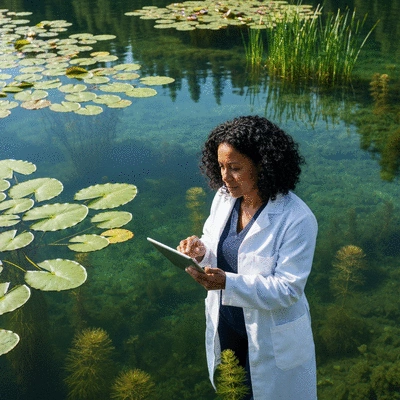
The Future of Mobile Identification Technologies in Ecological Monitoring and Restoration Ecology
Looking ahead, mobile identification technologies are poised to revolutionize the field of ecological monitoring. As we develop more sophisticated apps, we can expect features such as:
- Real-time data analysis that informs immediate management decisions
- Enhanced user interfaces that make information accessible to non-experts
- Integration with other environmental datasets for comprehensive analysis
- Collaboration tools that foster community engagement and citizen science
The future of these technologies is bright, and their potential to streamline restoration efforts cannot be overstated. By utilizing these advancements, we can foster a collaborative ecosystem of knowledge that drives our conservation efforts forward. For further reading on aquatic plant identification, Wiley Online Library offers scientific journals that delve into ecological research and innovations.
Taking Action: Downloading and Utilizing These Essential Tools
Now that we've discussed the importance of digital tools in managing hydrilla, it's time to take action! Downloading and utilizing these apps can significantly enhance your ability to contribute to ecological monitoring. Whether you're an educator, a student, or an environmental professional, these resources are invaluable for effective management.
At the Hydrilla Conservation Initiative, we encourage everyone to explore these tools and become active participants in combating invasive species. Engaging with the right resources can empower you to make a difference in your local ecosystem!
Encouraging Participation in Invasive Species Monitoring through Community Engagement
Community engagement is crucial in the fight against invasive species. Here are some ways to get involved:
- Join local conservation groups focused on invasive species management
- Attend workshops or webinars to learn about advanced tools and methodologies
- Participate in citizen science projects using mobile apps
- Share your findings with your community to raise awareness
By fostering a spirit of collaboration, we can collectively work towards restoring our wetlands and waterways. Every individual effort counts, and together, we can create a more sustainable future!
Resources and Further Reading for Aspiring Ecologists on Environmental Science
As you embark on your journey in ecological monitoring, having the right resources at your fingertips is essential. Here are some recommended readings and resources:
- Hydrilla Conservation Initiative Resource Page - Comprehensive guides and tools.
- Books on aquatic ecology and invasive species management.
- Online courses in environmental science and management.
- Scientific journals focusing on ecological research and innovations.
By leveraging these resources, you can enhance your understanding and skills in environmental science. Remember, the more knowledgeable we are, the better equipped we become to protect our precious ecosystems!
Recap of Key Points
Here is a quick recap of the important points discussed in the article:
- Understanding Hydrilla: Hydrilla verticillata is an invasive aquatic plant that threatens biodiversity and water quality.
- Identification Importance: Accurate identification of hydrilla is crucial for effective ecosystem management and early intervention.
- Digital Tools: Utilizing mobile apps and digital resources can enhance identification and monitoring efforts.
- Community Engagement: Local involvement and education are key to combating invasive species and restoring ecosystems.
- Future Technologies: Advancements in mobile identification technologies promise to improve ecological monitoring and community collaboration.

